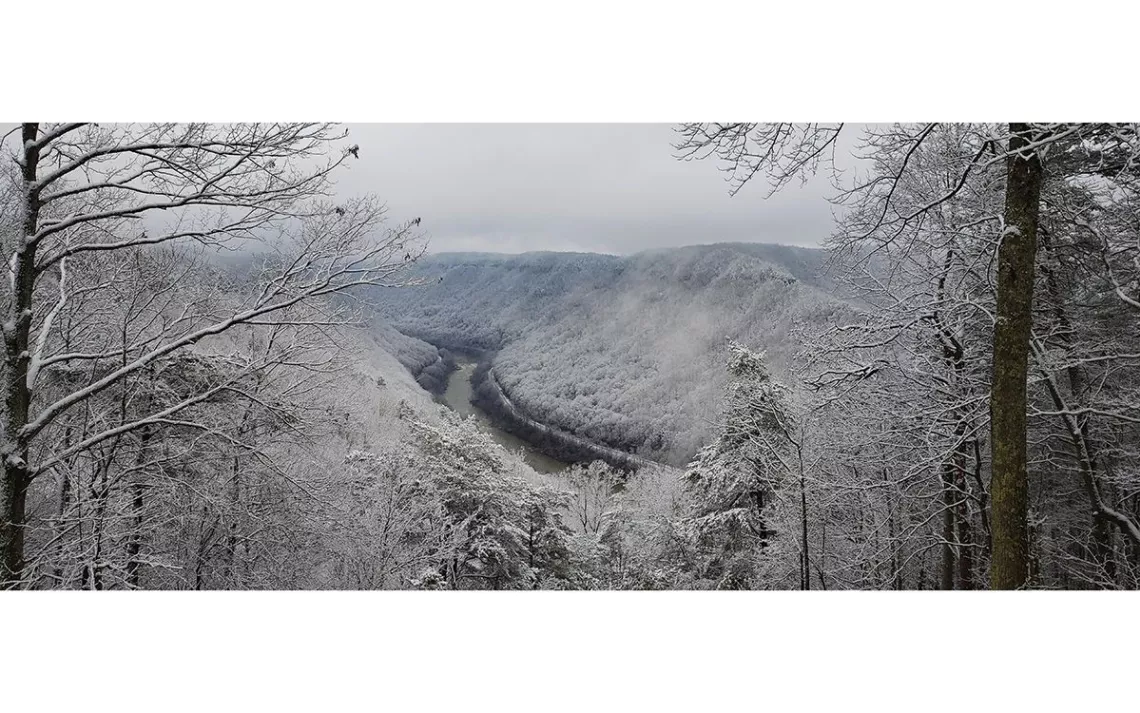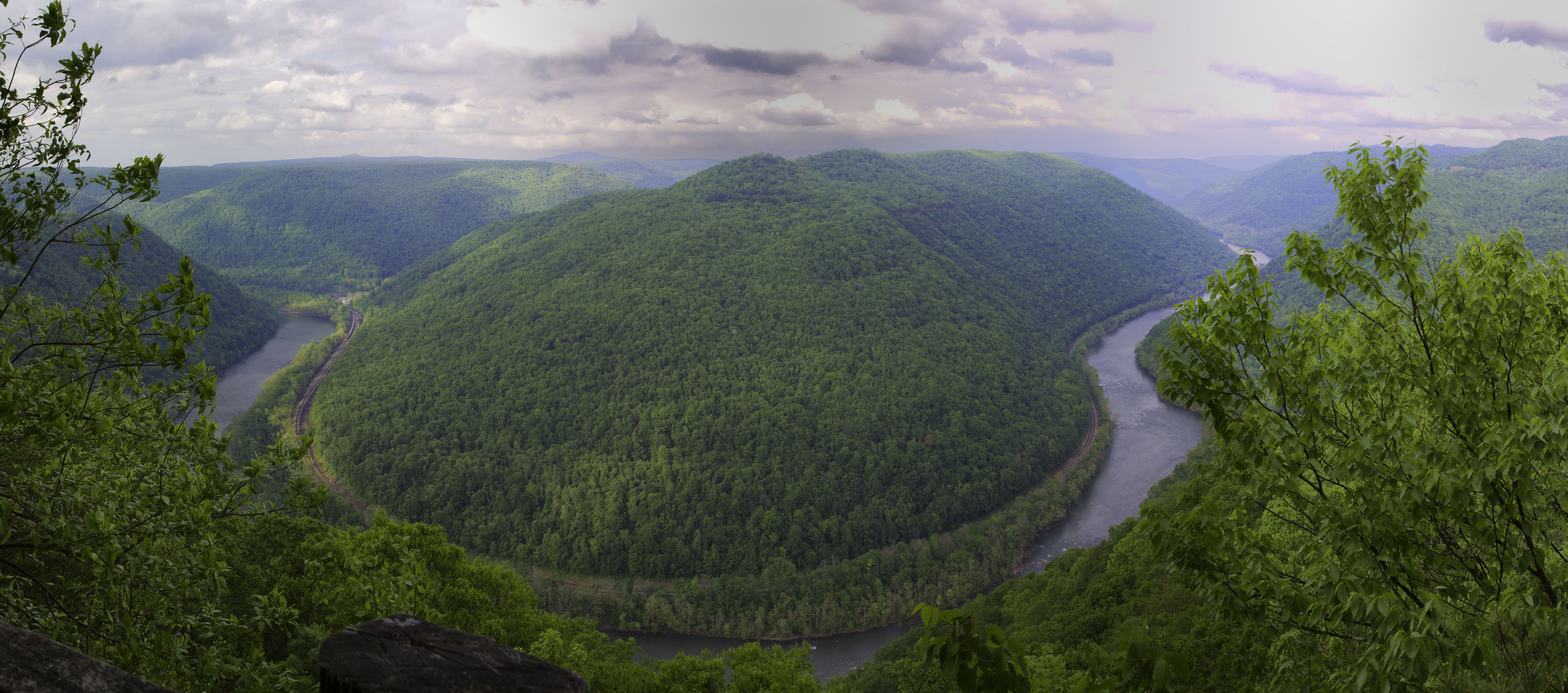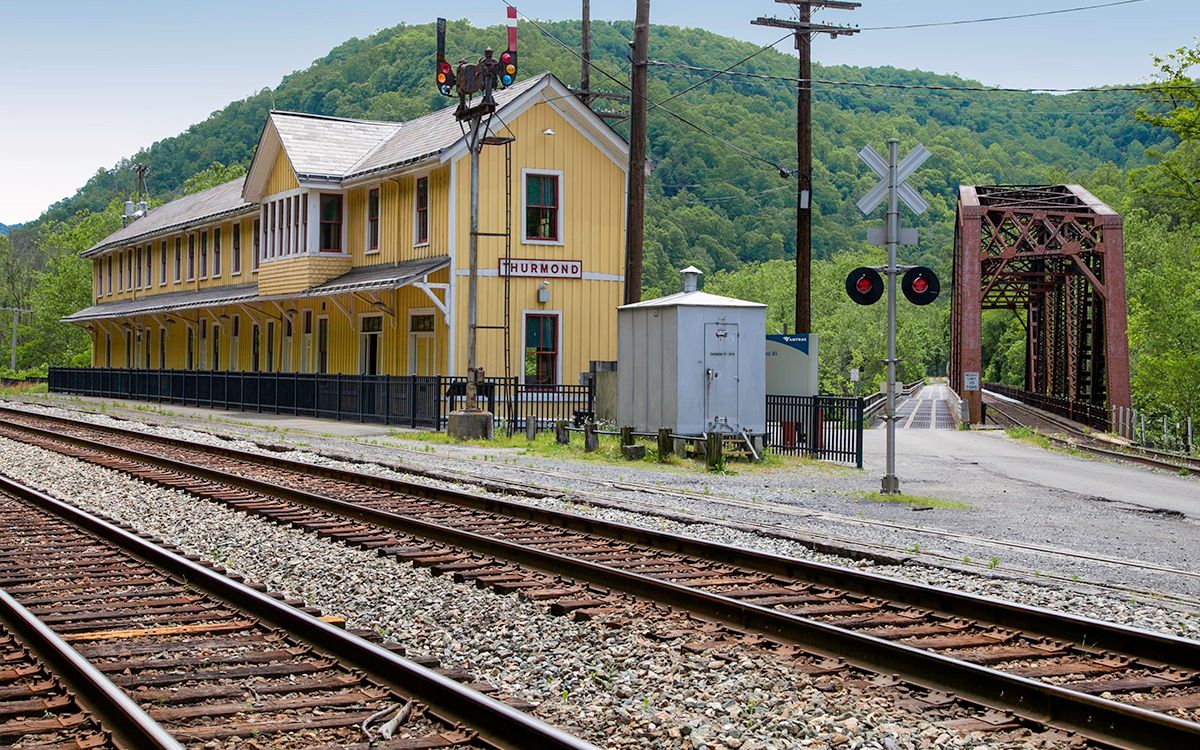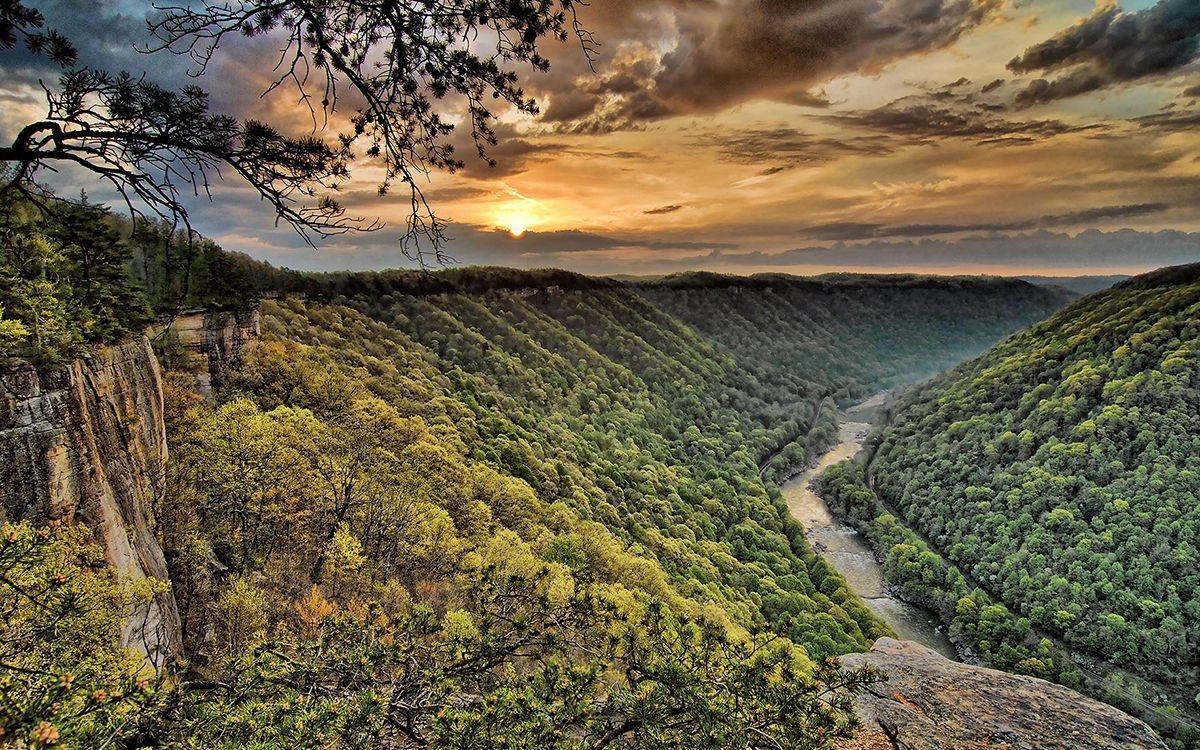Dispatch From New River Gorge, Our Newest National Park
Inside the West Virginia site’s ecological recovery, cultural history, and adventures

Photos courtesy of the National Park Service
To the unwitting observer, West Virginia’s New River Gorge might look like it’s been forested forever. But the beloved Appalachian rafting spot, which quietly became a national park and preserve under December’s COVID-19 relief bill, is anything but pristine. That’s what makes it extraordinary.
The former national river’s new status as a national park and preserve recognizes its cultural and ecological significance along with its recreational value and offers added protections. The park-and-preserve combination grants national park status to 7,000 acres of trails and historic sites, where hunting was already largely prohibited. Hunting will still be allowed in the rest of the 70,000-acre park, now decreed a national preserve. The new designation is expected to boost tourism but won’t change much on the ground.
“This was always a really unique and special area,” says supervisory park ranger Dave Bieri. “It’s just neat that people are starting to figure it out.”
A Cultural Cornerstone of West Virginia
The New River Gorge served primarily as a migration route for Indigenous peoples until the 19th century, when the arrival of the Chesapeake and Ohio Railway in the 1870s started a coal boom that lasted for decades. Short-lived mining towns and logging operations sprang up every half mile along the New River. Their transient occupants plundered the hills’ natural resources and then moved on.
Today, West Virginia’s first national park looks the part. It's the deepest river gorge in the Appalachian Mountains, with steep cliffs rivaling those of New River Gorge National Park’s counterparts in the West. Initially protected in 1978, the park is known for its Class IV and Class V rapids, for the vast sandstone formations that draw climbers from across the country, and for its more than 100 miles of hiking and mountain biking trails.
Recreational tourism peaks in summer, but winter is the best time for history buffs to visit. The absence of undergrowth makes it easier to spot the foundations of abandoned structures along New River Gorge’s trails and in Nuttallburg, a partially preserved mining boomtown tucked away at the end of a very long, very narrow road. Its claim to fame: Henry Ford owned the town, briefly, in the 1920s, to supply coal to his factories during his quest to control every stage of the automobile manufacturing process.
Geologically, the New River is in fact one of the world's oldest rivers. (According to legend, the name stuck after Europeans stumbled upon it in the 1700s and wrote “new river” on their maps.) It follows the last surviving stretch of the ancient Teays River, which dates back more than 320 million years, when it wound through a flat plain where the Appalachians stand today.
The New River’s modern path through the Allegheny Plateau exposed coal seams in the sandstone cliffs. Despite coal's abundance, until the late 19th century there was no way to transport it out of the gorge. The Chesapeake and Ohio Railway linked the formerly impassable landscape to the rest of the country, imported miners, and exported coal.
“As the nation was developing, a lot of that coal that was fueling the industrialization of the country was coming from the New River Gorge,” Bieri told Sierra.

Photo by Louise McLaughlin
Risen From the Ashes
Roads, diesel trains, and exhausted resources all contributed to the region’s economic decline. Blight accelerated the disappearance of the once predominant American chestnut tree. By the mid-20th century, when the last miners left, the gorge’s forests were gone.
“They took down just about every tree here,” Bieri says. “Look at some of the old historic photos from the early 1900s. It didn't look anything like this. It was really completely cut.”
Then, in the miners’ absence, the ecosystem started to recover. The second- and third-growth forest present in the New River Gorge today is one of the largest unfragmented forests in the eastern United States. Most of its animal species have returned, including river otters, which can often be spotted near Sandstone Falls, at the southern end of the park. Native peregrine falcons were reintroduced successfully in the early 2000s. In the park, which lacks natural caves, the Indiana bat and the Virginia big-eared bat, both endangered, have found refuge in abandoned mineshafts.
The gorge is also home to more than 4,000 species of plants, including the great rhododendron—the official flower of West Virginia—which draws crowds in the summer with its fragrant white blossoms. Rhododendrons stand out in winter too. Unlike most other plants, they hang onto their leaves, limp but vibrant among the naked trees.
Past disturbances have left the gorge vulnerable to invasive species, like the wooly adelgid, a beetle devastating eastern hemlocks. In Thurmond—a town (pictured, below) within the park that was once the biggest economic powerhouse on the C&O Railway but now has a population of six—rangers are experimenting with goats to control the rapid growth of kudzu, a climbing vine that smothers other plants. “It’s kind of a never-ending battle to get rid of the nonnative invasive species that try to come in and take over,” Bieri explains.

Photo by Louise McLaughlin
How to Adventure at New River Gorge
The boardwalk near the Canyon Rim Visitor Center, home to the park gift shop, features a fully accessible ramp leading to a viewing platform. Another 178 steps carry visitors to a second platform with panoramic views of the gorge and the 876-foot-tall New River Gorge Bridge—the steel arch bridge featured on the 2005 West Virginia quarter.
For easy-to-moderate hikes with spectacular views, Bieri recommends the 3.2-mile round-trip Long Point Trail and the two-mile-out-and-back hike from the Endless Wall trailhead to Diamond Point (pictured, below), an outcropping of sandstone that affords a dizzying look down onto the New River far below. These trails tend to be the most crowded. “With that popularity, of being such a great trail,” he says, “you're not going to have a wilderness experience.”

The self-guided African American Heritage Auto Tour app takes visitors on a drive through 17 sites in and near the park. It tells the story of Black workers drawn to the segregated boomtowns by the promise of equal wages in the mines and introduces listeners to the distinctive musical culture that emerged in the region.
The park’s nonhiking adventure opportunities extend well beyond its top-tier whitewater rafting, thousands of rock climbing routes, and 12 miles of trails built just for mountain bikers. Visitors inside the park can get out on the New River on kayaks and paddleboards. Nearby resorts offer land-based excursions such as ATV tours and horseback rides, along with plenty of options for explorers fond of heights, including ziplines, ropes courses, and trips across the catwalk built into the New River Gorge Bridge itself.
Goat project aside, Bieri wishes more visitors would stop by the town of Thurmond, where a row of surviving storefronts along the railroad tracks offer a glimpse into life in the gorge a century ago. The nearby Rend Trail, an old rail line, overlooks the town and is among the flattest and most accessible paths in the park.
Bieri’s personal favorite adventure is found on the Big Branch Trail, a steep three-mile loop located at the south end of the park. The trail starts at the river and follows a creek, punctuated by small waterfalls, past the ruins of an old farmhouse and up to a ridgetop. “If I hike that trail, I’m almost guaranteed to be by myself,” he says. “So if you're looking to get away from people and do a nice hike without a lot of people, that’s a good trail for you.”
 The Magazine of The Sierra Club
The Magazine of The Sierra Club



